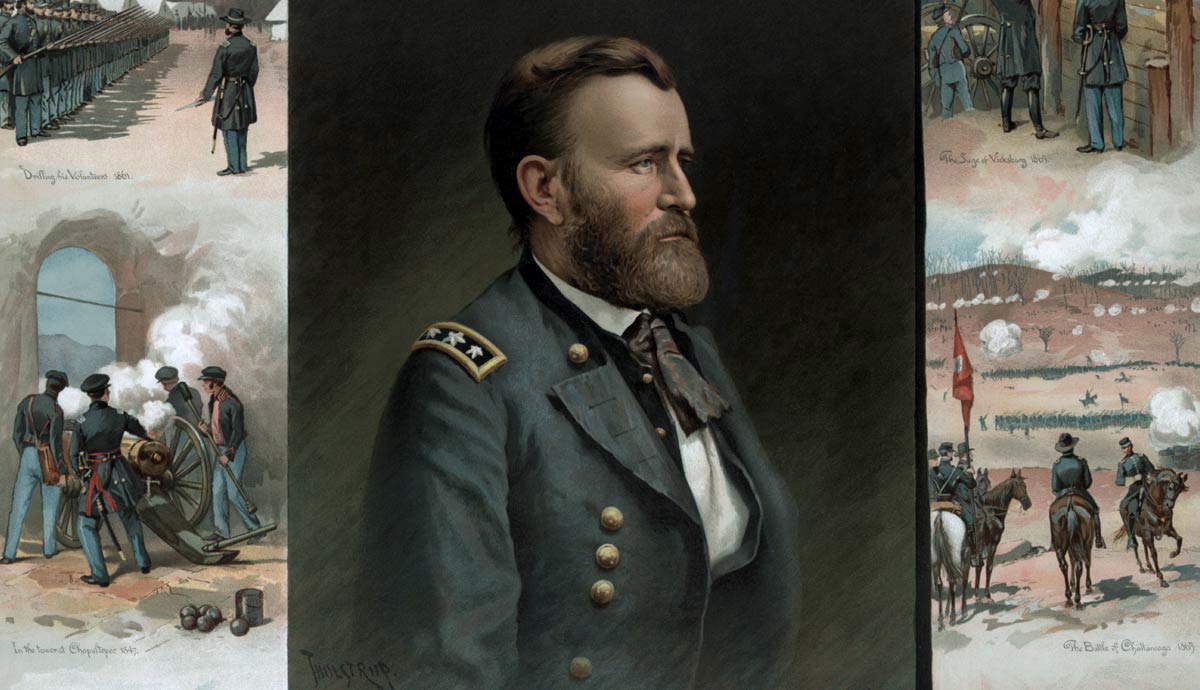
Sequoyah is perhaps best known for creating a written Cherokee language, but that is far from his only contribution to the history of his people’s culture and the culture of the United States as a whole. His perseverance to save his people created a connection between history and modernity that allowed the Cherokee a gateway into the future, cementing their traditions while enabling them to survive in the new United States. Sequoyah was a cultural leader, artist, silversmith, and warrior who left an impressive legacy in his wake.
Sequoyah: Early Life in Tuskegee

In the mid-1770s, in the region of Tuskegee (now Tellico Lake) in Tennessee, Sequoyah, known to some as George Gist, was born. His mother was Wu-Te-He, a member of the Cherokee tribe, Red Paint Clan. His father was believed to be a white man named Nathaniel Gist, a commissioned officer in George Washington’s Continental Army, though the certainty of this is lost to history.
Sequoyah’s father was not prominent in his life, either abandoning the family in the child’s infancy or dying at a young age. Sequoyah’s maternal family was one of relative prominence, with his mother’s five brothers all serving as nineteenth-century chiefs within the Cherokee tribe. As Cherokee heritage is traced matrilineally, this was important to his place within the tribe.

Sequoyah was injured in a hunting accident in his youth (though some sources believe he may have actually suffered from polio) and, as a result, suffered partial lameness for the duration of his life, including a limp. Despite this, he was still able to perform a variety of physical tasks, including military service.
Sequoyah was described as an inventive child, often creating ways to make tasks more efficient or help his mother in her duties. He began working as a trader, a career he learned from his mother. He would also gain skills as a blacksmith and silversmith and eventually build his own forge to make a living for himself. His mother died around 1800. Sequoyah married Sally Waters in 1815, and the two had a daughter, Ayoka.
Becoming a Warrior

In 1809, when he was likely in his early thirties, Sequoyah decided to begin working on an idea that had been occupying his thoughts for some time. He had experienced increasing encounters with white settlers as the United States moved westward, some good interactions and some poor. His tribal members were split on their opinions about white settlement, with some welcoming the encroachers and others wishing to fight.
One aspect of white culture that Sequoyah observed was that white people, unlike the Cherokee, had a written language. This written word gave them a sense of power because it could be used to write treaties, deeds, contracts, and the like. Sequoyah desired to capture the essence of the Cherokee language and give his people the same power by putting his native language to paper. His friends and family were skeptical about his idea, but he decided to start working on it nevertheless.

Sequoyah’s work was interrupted by the War of 1812. The Cherokee people were recruited to fight on the side of the United States Army, and Sequoyah heeded the call. He fought against the Red Sticks faction of the Creek tribe in battles throughout the Southeast under the command of Andrew Jackson. He was present at the Battle of Horseshoe Bend in the spring of 1814 and was discharged a month later. While in the army, he had observed many other examples of writing, which made him all the more eager to develop his idea.
Putting Words to Paper

Sequoyah became dedicated to his linguistic project. He experimented with the best way to capture the aura of the oral Cherokee language. He started with pictographs, like Egyptian hieroglyphs, then later turned to symbols intended to represent Cherokee syllables. To create his symbols, he adapted shapes from other languages, including English, Greek, and Hebrew.
From a young age, Ayoka, his daughter, became interested in his work and assisted with it, learning Sequoyah’s syllabary by the time she was six. By 1821, Sequoyah had created an 86-symbol syllabary with which to write in Cherokee. He began teaching others to use his written language, often using Ayoka’s skills to help demonstrate the correct utilization of the language. His brother-in-law would be the second person to learn to use the system.
Sequoyah On Trial

It is important to remember that at this time, no written language had ever before existed in the Cherokee culture. Many members of the tribe saw writing as a form of witchcraft. As a result, Sequoyah and Ayoka were both charged with witchcraft and brought to stand trial. To test them, they were separated by force and then asked to communicate by writing to see if it really was a form of speaking or if they were communicating via magic. After much convincing, the jury of warriors presiding over the trial came to believe that Sequoyah and his daughter were representing speech on their papers, not magic spells, and were among the first requesting to learn the syllabary.
The Success of the Syllabary

Sequoya’s system proved simple to learn and use, thus catching on quickly. It was created to mimic the sounds of the language so native Cherokee speakers could easily pick up the syllabary. Within a few years, a large proportion of the tribe was fluent in the written language. It was officially adopted by the Cherokee nation in 1825 and was soon taught in schools throughout the region.

Sequoyah began traveling and soon headed westward to Oklahoma to begin teaching his writing system there. In 1828, the Cherokee Phoenix, the first newspaper dually printed in Cherokee and English, commenced printing in Georgia. It was published weekly and included news, public documents, and Bible verses.
A Trail of Tears

In 1830, Andrew Jackson, Sequoyah’s former general, was sitting president of the United States. He considered one of his greatest accomplishments to be one of the nation’s greatest travesties: The Indian Removal Act. This piece of legislation, signed by Congress but pushed through by Jackson, forced the removal of the “Five Civilized Tribes”–the Creek, Chickasaw, Seminole, Choctaw, and Cherokee–from the Southeastern United States in exchange for new land in “Indian Territory”–the future Oklahoma.
The goal was to open up land for white settlement without Indigenous interference. It was also believed that a great deal of gold lay within the lands that the natives occupied. Despite the fact that the Cherokee took their case to the Supreme Court (Worcester v. Georgia), the results of which asserted their sovereignty and legally prevented the US government from displacing them, the removal continued.
President Jackson reportedly said, “John Marshall [Supreme Court chief justice] has made his decision, now let him enforce it.” To add insult to injury, the tribal members were forced to walk to their new homeland, often with just what they could carry. There were several of these trips made by thousands of native people, with about 100,000 displaced in total. The Trail of Tears made by the Cherokee people is perhaps the most famous of these journeys. Made through treacherous conditions, both environmental and human-made by their oppressors, it is estimated that a fifth of the Cherokee population died on this trip.

Sequoyah was already in Oklahoma teaching when the trip took place. There, he helped the newcomers and those already in Oklahoma work together to establish a new system of government and a community amenable to everyone’s needs. However, there were many splits within the tribe, between those living in the West for some time and the newcomers, between those who wanted revenge on the United States and those who wanted to assimilate.
A series of civil wars plagued the Cherokee nation, but Sequoyah constantly worked to bring his people together. He signed the new Cherokee constitution in 1839 (he had also worked on the first written Constitution in 1827, signed in New Echota in what is now Georgia). He continued to travel, visiting Mexico in search of locations where new Cherokee settlements could be established. Despite the conflicts that plagued them, Sequoyah’s written language was instrumental in keeping the Cherokee nation together and eventually repairing it during this tumultuous time. It aided communication near and far and boosted cultural connections. Additional newspapers sprung up to spread news and champion Cherokee causes; books were published, and pamphlets were written, all using the official syllabary.
The Loss of a Linguist (But Not His Language)

It was on a trip to Mexico in 1843 that Sequoyah passed away in his late sixties. Sequoyah never learned to read, write, or speak English. Instead, he was immersed completely in his native language and devoted his life to his syllabary’s success.
Succeed it did, as it is still omnipresent in 21st-century America. It is the co-official language with English in the Cherokee nation. It can be seen on signs and in public places, particularly in Oklahoma, and is taught to students of all ages from elementary to university levels in Oklahoma and North Carolina.
This is incredibly important work, as though there are 245 Indigenous languages in the United States, 65 are extinct, and 75 are dangerously close to extinction. If any lessons can be taken from Sequoyah’s work, it is clear that cultural value lies in Indigenous communication and that simple written words can solidify community bonds.










